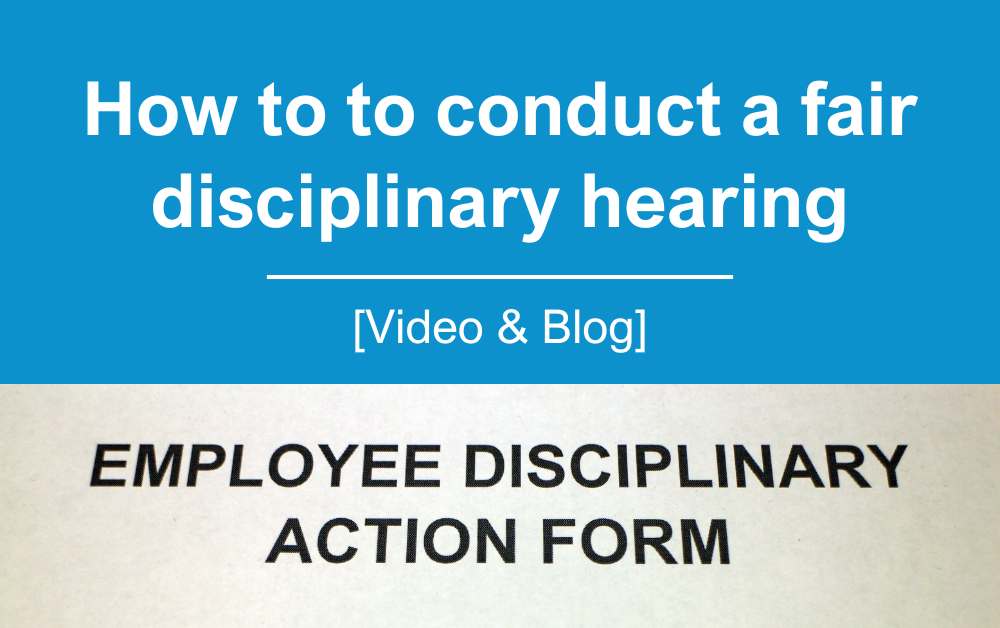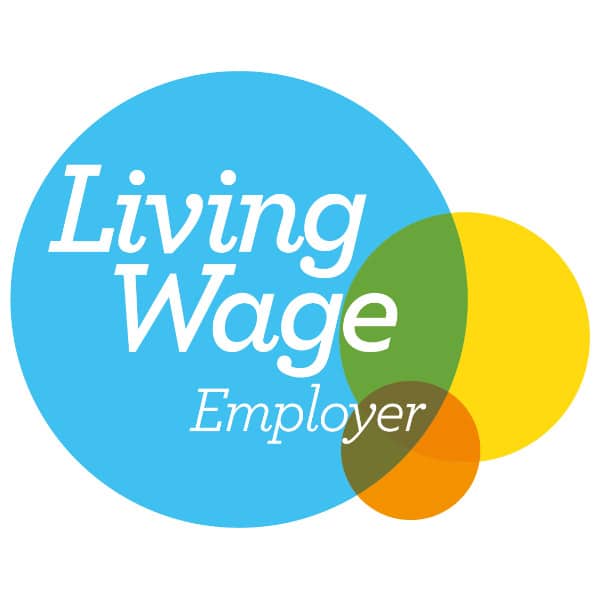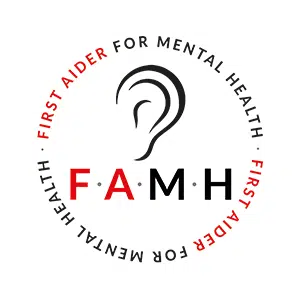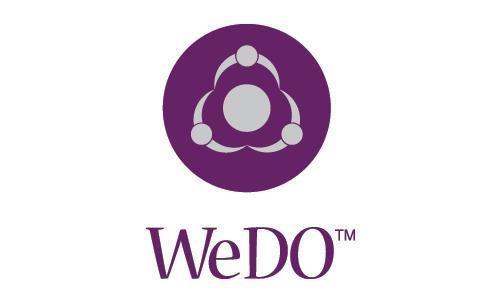7 Steps on how to to conduct a fair disciplinary hearing

A disciplinary hearing is sadly one of the most common aspects of HR that we get asked about. As you start to grow your business, your team will grow too. This leads to a likely possibility that you may experience some unforeseen challenges with your employees that you will have to deal with. Depending on the severity of the situation, this may also lead to a disciplinaries in the workplace.
It’s important to manage these situations right away to maintain the smooth running’s of your business. This can minimise the possibility of the problem escalating. This is why it is essential to have good HR processes in place to make the disciplinary meeting less problematic.
Step 1: Disciplinary Investigation – Investigate the situation before taking disciplinary action
It is fundamental that you investigate the disciplinary case before you consider disciplinary proceedings and/or disciplinary action. An an employer, ask yourself the following questions when establishing the facts:
- What is the disciplinary issue thing that has happened?
- When did it happen?
- Why did the alleged misconduct happen?
- Who did the bad/wrong thing?
- Were there any witnesses (also consider taking a witness statement)?
- Is there any evidence?
Anything verbalised at investigation meetings, and any investigation findings must be documented. These will become important reference documents if formal disciplinary hearings becomes necessary.
Your investigation should avoid opinions. This may be someone else’s opinion on what happened or what they think the employee did. An investigation is not the place for this. The length and depth of the investigation should be appropriate to the issue in question. For example, if your employee has been persistently late to work, only you would need to speak with them about this. However, if you suspect your employee is stealing from you, you are likely to refer to CCTV footage and speak with all staff that were on duty at the time of the incident.
Investigation meetings are informal, and you should not need to provide notice or allow the rights of representation to conduct an investigation meeting.
Step 2: Set expectations with your employees
It is important that you set appropriate expectations with your employees. Any one you have spoken to during the investigation should be aware that it is confidential. This includes any witnesses and the employee in question.
Any employees at the route of the conduct, capability or attendance issue, should be made aware that following your meeting, formal disciplinary hearings may take place.
A disciplinary meeting should never come as a shock to your employee.
Step 3: Invite letter to a formal meeting
Once you have established the facts, you need to invite your employee in to a formal meeting. You must do this in writing with a disciplinary hearing letter to start the formal disciplinary process.
Your invite letter must include:
- Date, time and location
- Who will be present at the meeting
- Your employee’s right to be accompanied at the meeting
- Details of what they are alleged to have done – this should be clearly set out.
- The potential consequences or potential outcome of the meeting
- Reference to any other documents you may wish to refer to
Trade Union Representative
As we mentioned above, your employee has the right to be accompanies at the meeting. They may even decide to bring along a trade Union Representative. It’s important that you understand the role of the representative before commencing the meeting.
A trade union representative at a disciplinary hearing plays a crucial role in supporting and advising the employee involved, ensuring their rights are protected and that the process is fair and compliant with employment laws. They can also assist in presenting the employee’s case, asking questions, and providing a balanced perspective, while ensuring that the disciplinary procedures are properly followed by the employer.
Step 4: Advance notice about the disciplinary hearing
To ensure that your employee is not surprised about disciplinary hearings, you should inform them beforehand so they are expecting the formal disciplinary action invite letter.
You should always ensure that you provide your employee with reasonable notice ahead of any disciplinary meeting. We suggest a minimum of two clear days’ notice between the day they have received the letter, to the day of the meeting.
This notice is to allow your employee reasonable time to prepare, and arrange to be accompanied if they wish.
Step 5: Be prepared for the disciplinary meeting
It is crucial that you are prepared for the meeting, make sure you book time out of your diary for this. You must also review the information provided in your investigation documents, and the allegations set out in the disciplinary hearings invite letter.
It can be effective to write out the questions you would like to ask your employee. This can make the meeting run smoother. The best questions to ask are open questions, for example ‘tell me…’, ‘describe to me…’, rather than a question that requires a simple yes or no answer.
Furthermore, having appropriate and related questions can help you come to a decision after the meeting.
It can also be effective to plan cover during the meeting to reduce the possibility of being short staffed.
Step 6: Set out a structure for the disciplinary meeting
Your hearing must have a clear beginning, middle and end structure.
In the beginning, you should open with introductions and set expectations about what is going to happen.
At the outset of disciplinary hearings, it can also be helpful to cover some general procedural points, to ensure the evidence you have leads to a fair disciplinary procedure. This can include confirming that this is a formal disciplinary meeting, referring to the invite letter.
The middle is the detailed part. You must discuss the issue in question, as set out in the disciplinary letter. This is where your preparation comes in handy. You must ensure that only the issues brought up in the invite letter or any additional paperwork you enclosed with the letter is discussed.
You may be wondering how long the meeting will take? The answer is that it depends…it depends how complex the situation is. It’s important you must leave enough time to allow your employee to respond. This can make you feel like you can come to a decision at the end.
Once you get to this point you should adjourn the hearing.
Step 7: Adjourning the disciplinary meeting
The adjournment is important, as this gives you an opportunity to consider the outcome of the disciplinary decision.
Once you reach an outcome decision that you feel confident with that is fair, you can reconvene the disciplinary hearings to deliver your outcome decision, or it may be preferable to confirm your decision in writing.
The Outcome of a disciplinary hearing
Written Warning
If the final outcome of a disciplinary process is a written warning for an employee, an employer should follow a clear and structured approach. Firstly, the warning should be formally documented, clearly stating the nature of the misconduct, the expectations for future behavior, and the consequences of any further infractions. This document should be shared with the employee, ensuring they understand both the reasons for the warning and the improvements required. It’s important to maintain a professional and constructive tone, focusing on corrective action rather than punitive measures. You should also set a review period to monitor the employee’s progress and offer support or training if needed to help them meet the expected standards. Keeping a record of this warning in the employee’s personnel file is crucial for future reference, but it should be done with respect to privacy and data protection laws.
Finally, open communication is key; the employer should encourage the employee to discuss any challenges they face in meeting these expectations and provide regular feedback to aid their development.
Final Written Warning
When the final outcome of a disciplinary process is a final written warning, you should take several critical steps. First, the warning must be formally documented, specifying the nature of the misconduct, the improvement required, and the timeframe for change. This document should also clearly state that any further violation may lead to more severe consequences, including potential dismissal. It’s vital to communicate this warning to the employee in a meeting, providing an opportunity for them to understand and respond to the concerns raised.
During this meeting, the employer should emphasise the seriousness of the situation and the expectation for immediate and sustained improvement in behaviour or performance. Additionally, the employer should offer support, guidance, or training if necessary to help the employee meet the required standards. This final warning should then be added to the employee’s personnel file, ensuring accurate records are kept while respecting privacy and data protection regulations. The employer should also set a review period to evaluate the employee’s progress and maintain open lines of communication for ongoing feedback and support, creating a clear path for the employee to rectify their behaviour or performance issues.
Gross Misconduct
Once you adjourn the meeting, you may find that there is evidence of gross misconduct. Examples of gross misconduct include theft, physical violence, serious breach of health and safety regulations, or significant insubordination. Other examples include fraud, serious breaches of company policy (like data protection violations), and behaviour that seriously damages the trust and integrity essential to an employment relationship.
We encourage you to seek advice before delivering the outcome to your employee.
Employment tribunal
If you are faced with an employment tribunal following the disciplinary hearing, it’s essential to handle the situation carefully and professionally. Here are steps you should consider:
Understand the Basis of the Tribunal Claim
Be clear about the reasons why the employee has taken the matter to a tribunal. This is usually related to allegations such as unfair dismissal, discrimination, or breach of contract.
What is unfair dismissal?
When an employee is terminated from their job in a manner that is considered unjust, unreasonable, or in violation of employment law. It typically involves situations where the employer has not followed proper legal procedures, lacked a valid reason for dismissal, or discriminated against the employee. Victims of unfair dismissal may seek legal recourse, including compensation or reinstatement.
Review Documentation and Procedures
Ensure all documents related to the employee’s case are in order. This includes their employment contract, records of the disciplinary process, any relevant communication, and notes from meetings. Review these to ensure that all processes were followed correctly and fairly.
Seek Legal Advice
It’s critical to consult with an employment expert as soon as you are notified of the tribunal claim. It is crucial to consult with an employment law specialist, ideally a solicitor or a legal firm with expertise in employment law and tribunal cases. They can provide expert advice on how to proceed, the strengths and weaknesses of your case, and the legal implications of the tribunal’s decision.
You can contact legal professionals through law firms or professional legal networks.
Understand the Tribunal Process
Familiarise yourself with the employment tribunal process. Know what to expect at each stage, from the preliminary hearing to the final decision.
Handle Communications Carefully
Be mindful of how you communicate about the tribunal. Keep discussions professional and confidential, and ensure that other employees are not adversely affected by the situation.
Review Internal Policies
Use this as an opportunity to review your internal disciplinary procedures and policies. Ensure they are up to date, fair, and in compliance with current employment laws.
Plan for the Outcome
Be prepared for various outcomes. Discuss with your employment experts the potential consequences and next steps, including any changes in workplace practices or policies that may be required.
Reflect and Learn
Regardless of the outcome, reflect on the situation and learn from it. Consider if there are improvements to be made in how disciplinary matters are handled in the future to prevent similar situations.
Remember, every case is unique, and these steps should be tailored to your specific situation. The key is to act responsibly, follow legal advice, and ensure that your company’s actions are justified and well-documented.
Employee Morale
Improving employee morale can significantly reduce the risk of disciplinary hearings or tribunals by fostering a positive and respectful work environment, which often leads to fewer conflicts and grievances. When employees feel valued, supported, and engaged, they are more likely to be productive and adhere to company policies, thus decreasing the likelihood of behaviour that might necessitate disciplinary action. Additionally, high morale typically enhances open communication and trust between staff and management, enabling early resolution of issues before they escalate to formal disciplinary proceedings or legal disputes.
Are you ready to elevate your HR strategies?
Connect with our expert HR team for tailored solutions and insights. Call The HR Booth at 01383 668178 or reach out via email at info@thehrbooth.co.uk or use the contact form.








